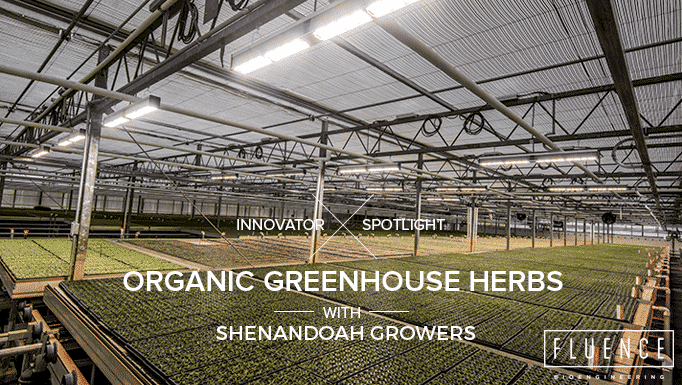
23 Mar Innovator Spotlight: Increasing Food Production (Organically) with Shenandoah Growers
Virginia greenhouse grower sees increased biomass & reduced energy consumption with the use of Fluence PhysioSpec spectrum
Before “sustainability” became a buzzword tossed around with abandon, the practice of growing good food with great respect for the environment was the foundation of Virginia-based Shenandoah Growers.
Founded more than 20 years ago, the herb-producing greenhouse farm has scaled from fewer than two dozen employees delivering to a handful of Shenandoah Valley customers to a bustling enterprise serving 5,000 retail outlets.
And even as the company has grown, the dedication to responsible, organic growing practices has remained firmly in place. Recycled rainwater nourishes the fragrant-smelling herbs, while thousands of ladybugs, other beneficial insects and old-fashioned, yellow sticky “fly paper” keep pests at bay without the use of harmful chemicals.
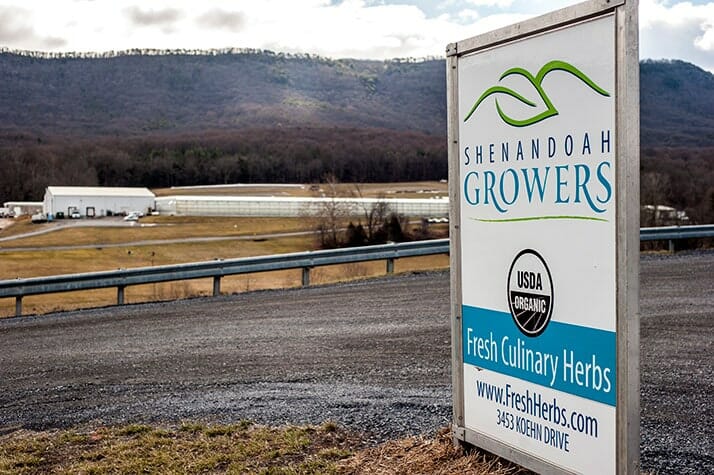
Nestled between the Appalachians and Blue Ridge Mountains, Shenandoah Growers produces organic herbs enjoyed by consumers from the East Coast all the way to Texas.
But make no mistake: For all its dedication to responsible production, Shenandoah Growers is a precisely managed, high-tech operation, says Chief Science Officer Bob Hoffman. State-of-the-art greenhouses ensure plants’ exact needs are met through the precise provision of light, temperature, nutrients and water.
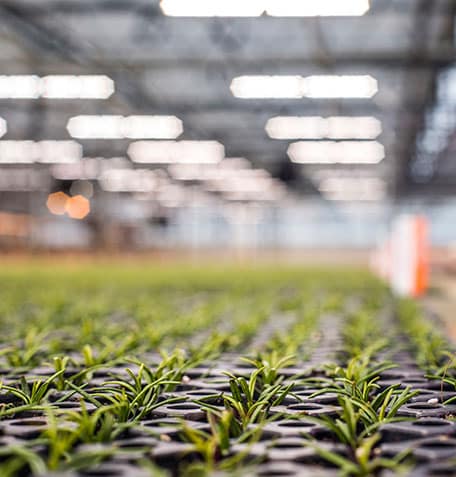
On their way to flavoring savory dishes
up and down the East Coast, rosemary plants get their start
under Fluence VYPRx LED grow lights (VYPR available Q2 2016).
Many herbs to many retailers
Six acres of greenhouses produce both potted and cut herbs — cilantro, dill, parsley, mint, rosemary, thyme, oregano, sage and a number of basil varieties, just for starters — for distribution to big-name grocery retailers throughout the Eastern U.S. and Texas. “We grow more than 10 million pots of herbs a year,” says Hoffman.
In addition to the greenhouses, “We’re developing some grow room concepts for plug and nursery production,” says Hoffman.
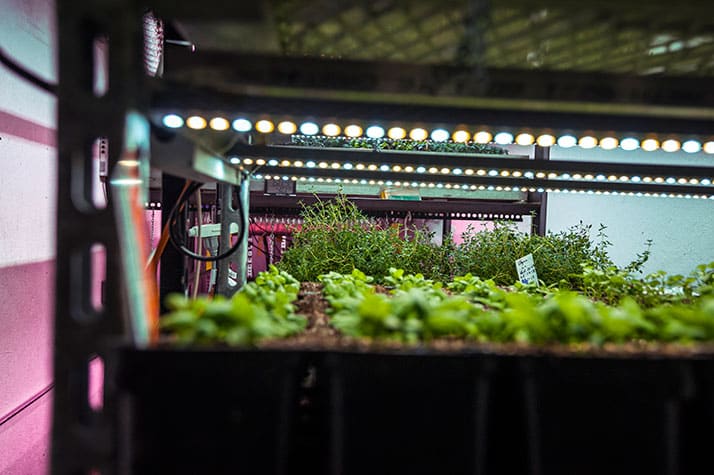
A prototype Fluence propagation system prepares young plants for their transplant into the greenhouse.
And as productive as Shenandoah Growers is, Hoffman considers it his mission to increase the company’s efficiency even further. He’s proud of their growing facility and the quality of their products. Part of his strategy is to use supplemental lighting to enhance crop productivity during times when natural sunlight in insufficient — for example, during winter or on cloudy days other times of the year.
“Supplemental lighting increases the productivity as well as the quality of our crops,” says Hoffman. “When sunshine is limited, we use the lights to increase crop yield vs. what we would otherwise produce.”
Hoffman has tested various lighting systems for a number of years.
HPS is fairly consistent, but what I see with Fluence LED systems is enhanced color, reduced stretching and better flavor,” says Hoffman.
Impressive results from Fluence
“I see a more compact plant with tighter internodal spacing. Combine that with increased productivity and decreased operating costs, and going forward, we’re absolutely investing in LED,” he adds.
While Hoffman, a 45-year veteran of the horticulture industry, has tested a number of lights from a select number of LED manufacturers, he says he definitely likes what he sees from Fluence Bioengineering. “They’ve been a great partner. They have developed specialized tools to help us accelerate our production goals — a custom solution to fit our spectral needs,” he says. “They’ve worked very diligently and responsibly to find the correct solution quickly.”
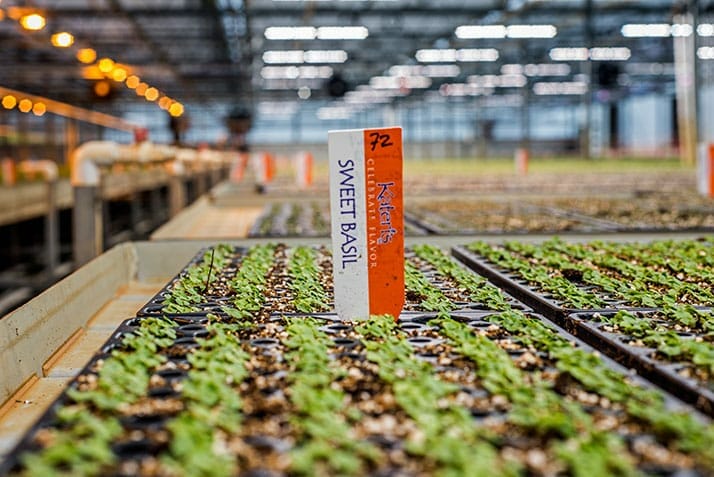
Sweet basil moved from propagation to greenhouse under Fluence VYPRx systems.
When you look at the efficacy of the electrical input vs. photon input, the low maintenance requirements and the reduction of heat output per electrical watt input, Fluence LEDs just make sense,” says Hoffman.
For a farm focused on high efficiencies, increased productivity and earth-friendly methodologies, adding LED supplemental lighting to an already successful greenhouse farming operation sounds like a business model that will sustain Shenandoah Growers well into the future. That’s great news for the millions of consumers who rely on Shenandoah’s healthful herbs for dinner every night.

It’s easy to see the difference between Fluence VYPR LED systems and HPS.


